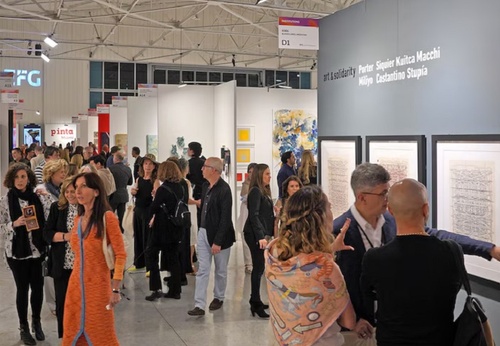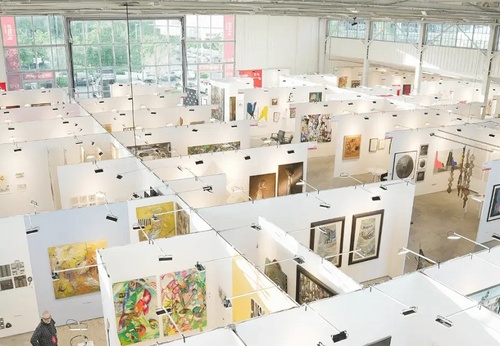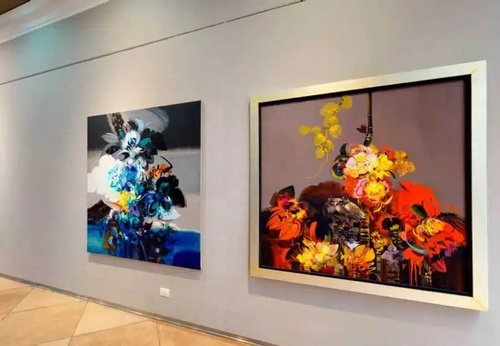
What Is plastic art?
Plastic art is a type of visual art in which three-dimensional objects are made from a range of materials. The term "plastic" in this context does not relate particularly to the synthetic substance popularly recognized as plastic, but rather to the malleability and sculptural possibilities of the materials utilized.
Sculpture, installation art, and mixed-media works are all examples of plastic art. One of the most well-known kinds of plastic art is sculpture, which is the process of making three-dimensional objects out of a wide range of materials. This may entail cutting, modeling, casting, or the assembly of multiple components.
Plastic artists have been around since ancient times when they used materials like stone, clay, and metal to make sculptures and other artifacts. Plastics and synthetic resins are now among the modern materials utilized in plastic art, which has grown throughout time.
Plastic art has the ability to communicate a variety of concepts and ideas, which is one of its main characteristics.
Plastic Artists
Plastic artists can make three-dimensional works that the audience can examine from different vantage points because of their sculptural character.
Carving, modeling, casting, and assembly are just a few of the processes utilized to make plastic art. Whereas modeling entails molding material, such as clay, with tools or hands to create a form, carving entails removing material from a bigger block to achieve a desired form.
Casting entails making a cast and filling it with a material like plaster or resin, whereas assemblage entails combining several elements to form a single work of art.
In conclusion, plastic art is a dynamic and adaptable visual art form that has been around for millennia. The sculptural quality of the finished pieces, in addition to the great variety of thoughts and subjects they can communicate, make this a fascinating art form that has inspired artists all over the world.
The history of plastic arts
Plastic artists have been around since ancient times, when they used materials like stone, clay, and metal to make sculptures and other artifacts. Ancient Grecian and Egyptian civilizations are renowned for their skill in sculpture.
The Greeks established a style of naturalistic representation that stressed the beauty and perfection of the human form, while the Egyptians constructed massive statues of their gods and pharaohs.
There was a rebirth of interest in ancient Greek and Roman sculpture throughout the Renaissance in Europe, which resulted in a resurgence of sculptural creativity. Some of the most well-known sculptures ever made were produced during this time by artists like Michelangelo and Bernini, and many of them are still displayed in public spaces and museums today.
Plastic art underwent a significant increase in the 20th century, with artists experimenting with anything from plastics and synthetic resins to found objects and natural materials.
The emergence of installation art in the 1960s and 1970s significantly enlarged the potential of plastic art, allowing artists to create immersive environments that engaged spectators in novel and exciting ways.
As artists explore the limits of what is possible with various materials and methods, plastic art is still changing and evolving today. Technology, like 3D printing, has greatly widened the scope of plastic art, enabling designers to produce works with previously unattainable levels of complexity and detail.
From the beauty of the human form to more nebulous ideas like movement, emotion, and time, plastic art has been utilized to explore a wide range of themes and ideas throughout its history.
Plastic art continues to attract and inspire both artists and viewers because it engages the spectator on both a tactile and cerebral level.
Examples of plastic arts
The term "plastic arts" refers to a broad category of artistic practices that involve the construction of physical objects with three dimensions. Examples of plastic arts include the following:
Sculpture
One of the most well-known types of plastic art, sculpture entails the three-dimensional modeling of objects from a wide range of materials.
Stone, metal, wood, and even plastic can all be used to create sculptures that range from representational to abstract to somewhere in between.
Installation art
The term "installation art" refers to a specific type of art that uses a variety of media, including sculpture, to create a three-dimensional space that actively engages the observer. Large-scale works that dramatically alter a room's aesthetic are typical of this plastic art subgenre.
Pottery
Pottery is a type of plastic art in which items are made out of clay. These might range from practical items like plates and bowls to aesthetically pleasing items like vases and sculptures.
Assemblage
Assemblage is a type of plastic art in which a single piece of art is made by fusing disparate elements. In addition to more conventional painting supplies like paint and canvas, this can also include discovered artifacts like disused tools and machine parts.
Mixed media art
Using a variety of mediums in a single composition is known as mixed-media art. These can be everything from paintings and collages to found objects and sculptures.
Glassblowing
Glassblowing is a kind of plastic art in which things like vases, bowls, and sculptures are created by heating and shaping glass. A high level of expertise and accuracy, as well as familiarity with the characteristics of glass, are necessary for this type of plastic art.
These are but a few examples of the numerous types of plastic art that exist. Every type of plastic art presents its own special combination of difficulties and chances for artistic expression.
Source


- December 04, 2025
NFTs and Emerging Latin American Artists

- December 04, 2025
Pinta Miami 2025: Epicenter of Contemporary Latin American Art

- December 03, 2025
Gallery of Caricatures by William Ferreira – Uruguay

- December 03, 2025
Gallery of Cartoons by Cau Gomez – Brazil

- December 03, 2025
Pinta Miami Boosts Latin American Art

- December 03, 2025
Reinterpreting the Work of Fernando Botero

- December 03, 2025
Alejandro Obregón and the Consolidation of Colombian Modernism

- December 03, 2025
Slanted Yearbook of Lettering: No. 1

- December 04, 2025
NFTs and Emerging Latin American Artists

- December 03, 2025
Reinterpreting the Work of Fernando Bot…

- December 03, 2025
Alejandro Obregón and the Consolidation…

- December 02, 2025
Hélio Oiticica and the Legacy of Brazil…

- December 02, 2025
The Relevance of Tarsila do Amaral in B…

- December 01, 2025
How Art Auctions Work in Latin America

- December 01, 2025
The Growth of Young Collectors in the R…

- November 30, 2025
Record-Breaking Latin American Works at…

- November 30, 2025
Emerging Galleries Transforming the Lat…

- November 29, 2025
Review of Recent Exhibitions at Latin A…

- November 29, 2025
Analysis of a Botero / Kahlo / Lam / Cl…

- November 27, 2025
New Curatorial Discourses in Latin Amer…

- November 27, 2025
Printmaking and its Tradition in Mexico…

- November 26, 2025
Latin American Abstract Painting: From …

- November 26, 2025
The Influence of Brazilian Neo-Concreti…

- November 25, 2025
Graffiti as a tool for social activism …

- November 25, 2025
Street art en São Paulo, Bogotá y Ciuda…

- November 23, 2025
Contemporary Sculpture in South America

- November 22, 2025
Graffiti as a Tool for Social Activism …

- November 22, 2025
Latin American Urban Artists Who Are Se…

- August 29, 2023
The history of Bolivian art

- February 19, 2024
Analysis and meaning of Van Gogh's Star…

- January 28, 2024
Culture and Art in Argentina

- September 25, 2023
What is the importance of art in human …

- September 23, 2023
What is paint?

- August 23, 2023
The 11 types of art and their meanings

- August 10, 2023
14 questions and answers about the art …

- September 23, 2023
Painting characteristics

- August 30, 2023
First artistic manifestations

- January 12, 2024
10 most beautiful statues and sculpture…

- September 23, 2023
History of painting

- March 26, 2024
The importance of technology in art1

- March 26, 2024
Cultural identity and its impact on art…

- July 13, 2024
The impact of artificial intelligence o…

- August 16, 2023
The 15 greatest painters in art history

- April 02, 2024
History visual arts in Brazil

- April 06, 2024
History of visual arts in Ecuador

- October 18, 2023
History of sculpture

- March 05, 2024
The art of sculpture in Latin America

- August 24, 2023
The most famous image of Ernesto "Che" …

- February 19, 2024
Analysis and meaning of Van Gogh's Star…

- August 13, 2023
9 Latino painters and their great contr…

- August 23, 2023
The 11 types of art and their meanings

- August 10, 2023
14 questions and answers about the art …

- August 27, 2023
15 main works of Van Gogh

- August 29, 2023
The history of Bolivian art

- January 28, 2024
Culture and Art in Argentina

- November 06, 2023
5 Latin American artists and their works

- September 23, 2023
Painting characteristics

- September 23, 2023
What is paint?

- September 25, 2023
What is the importance of art in human …

- March 26, 2024
Cultural identity and its impact on art…

- August 30, 2023
First artistic manifestations

- December 18, 2023
10 iconic works by Oscar Niemeyer, geni…

- January 20, 2024
What is the relationship between art an…

- January 12, 2024
10 most beautiful statues and sculpture…

- October 30, 2023
Characteristics of Contemporary Art

- August 24, 2023
The most famous image of Ernesto "Che" …

- May 26, 2024
Técnicas de artes visuais

- August 22, 2023


